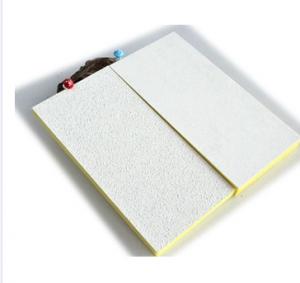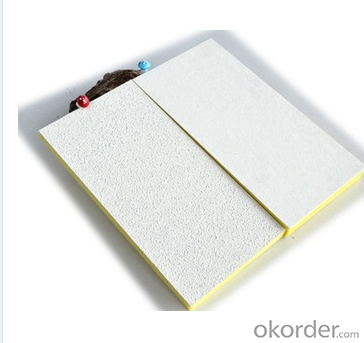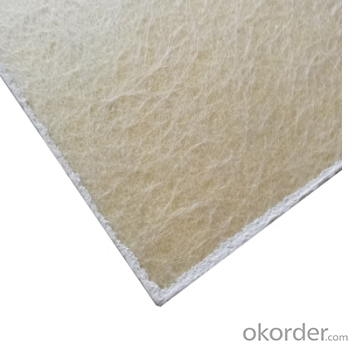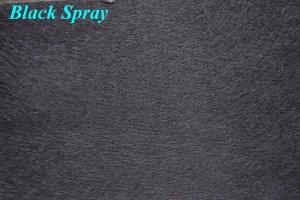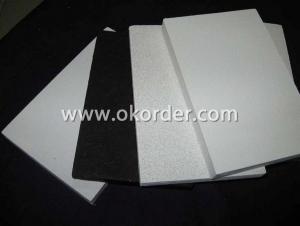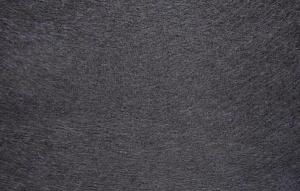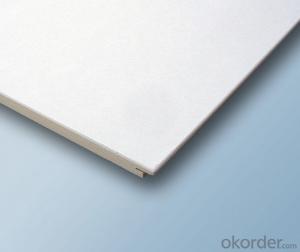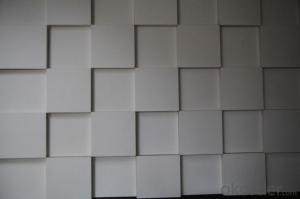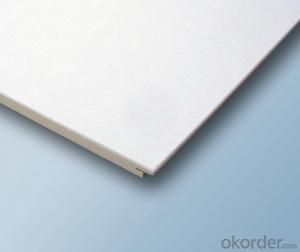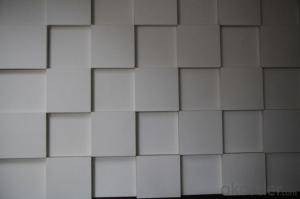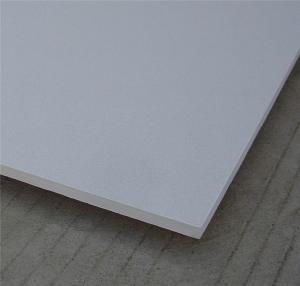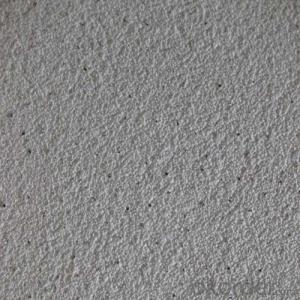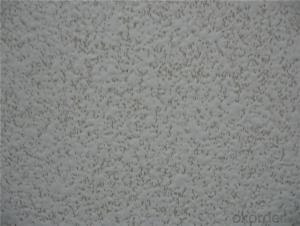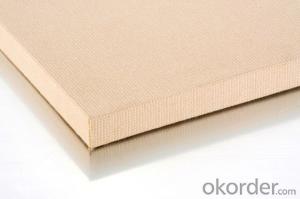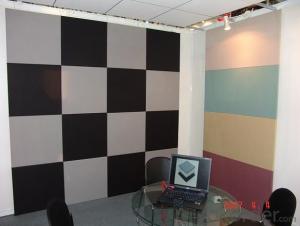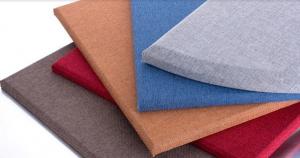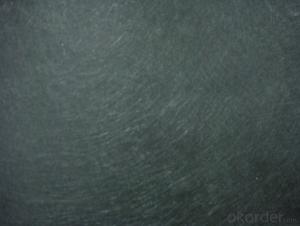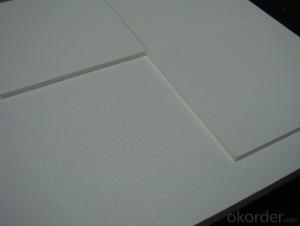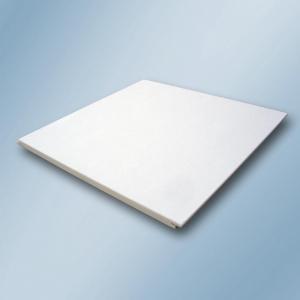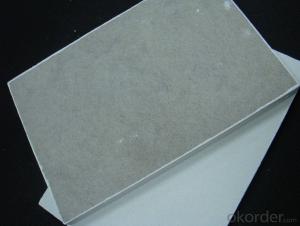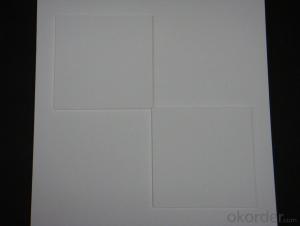Fiberglass Bathroom Ceiling Panels - Soundproof Fiberglass Tiles & Panels
- Loading Port:
- Shanghai
- Payment Terms:
- TT or LC
- Min Order Qty:
- 4000 m²
- Supply Capability:
- 20000 m²/month
OKorder Service Pledge
OKorder Financial Service
You Might Also Like
Specifications:
Main Material: Fiberglass wool
Density: Standard 100kgs/m3
Thickness: 15mm,20mm, 25mm and etc.
Size: 600*600mm,600*1200mm and etc.
Textures: White painted, Mix Acoustic, White Spray, BlackSpray
Edge: Square, Tegular for 15/24 grids, Concealed
Black spray White spray
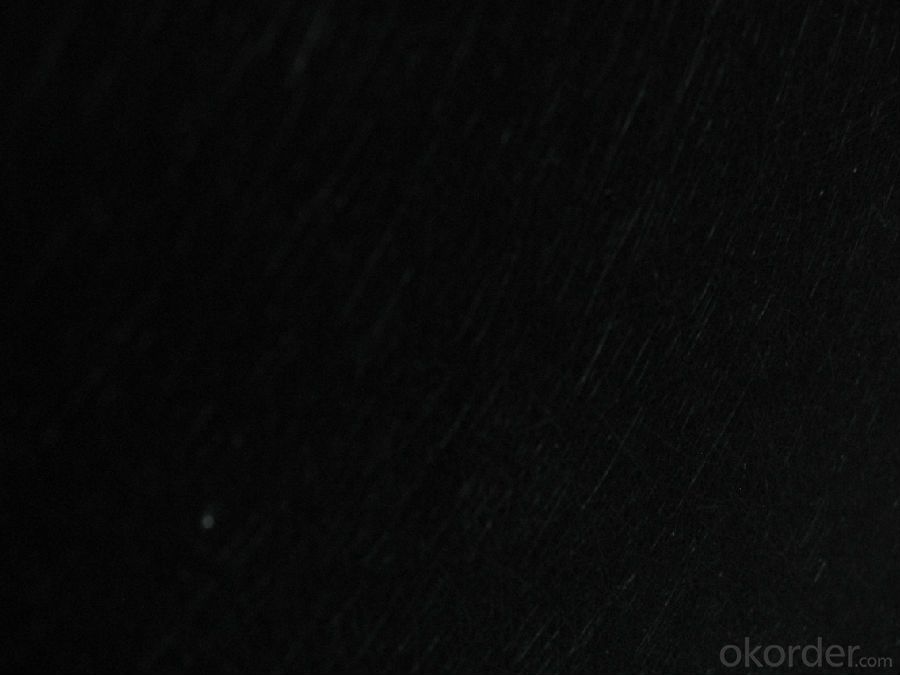

Mix Acoustic White painted
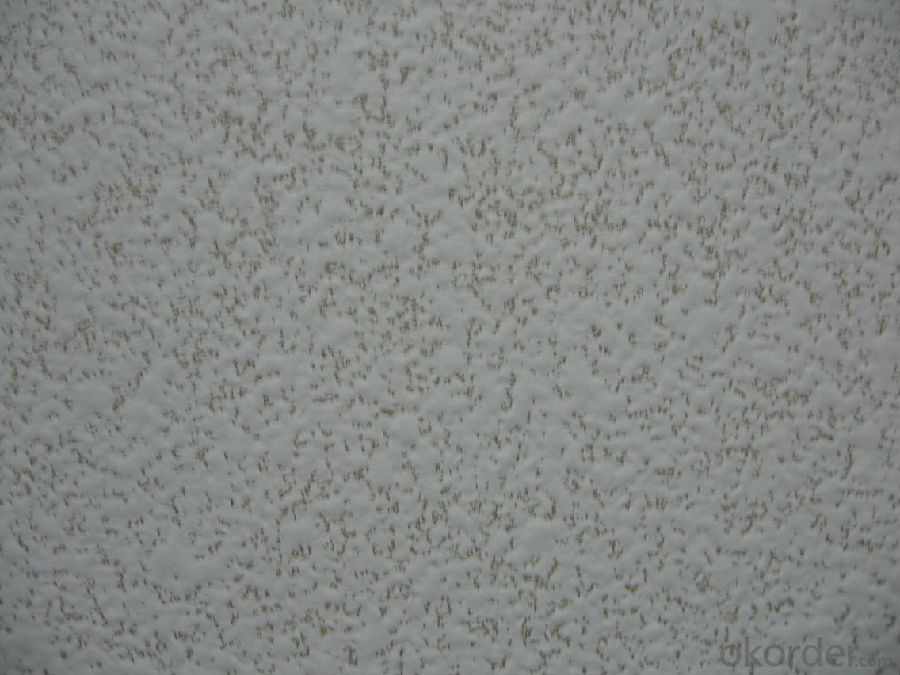
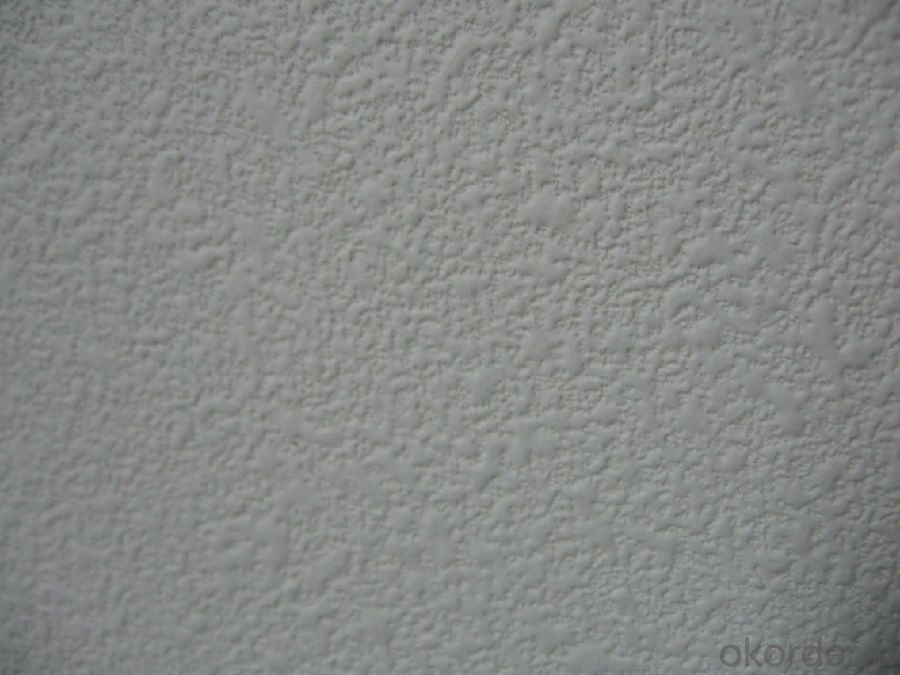
Fiberglass acoustic ceiling tiles decoration material
Quick Detail:
Non-combustible;
No sagging, warpping or delaminating;
Green building material;
Excellent sound absorption;
With different pattern available;
Applications:
Halls, Classrooms, Offices, Shopping centers, etc.
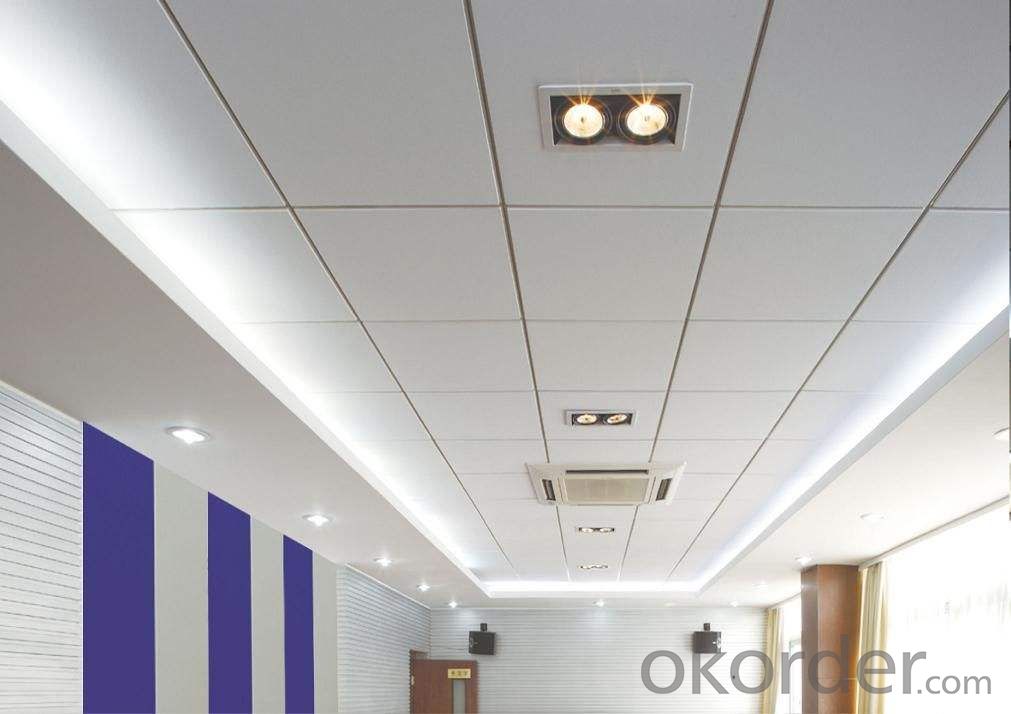
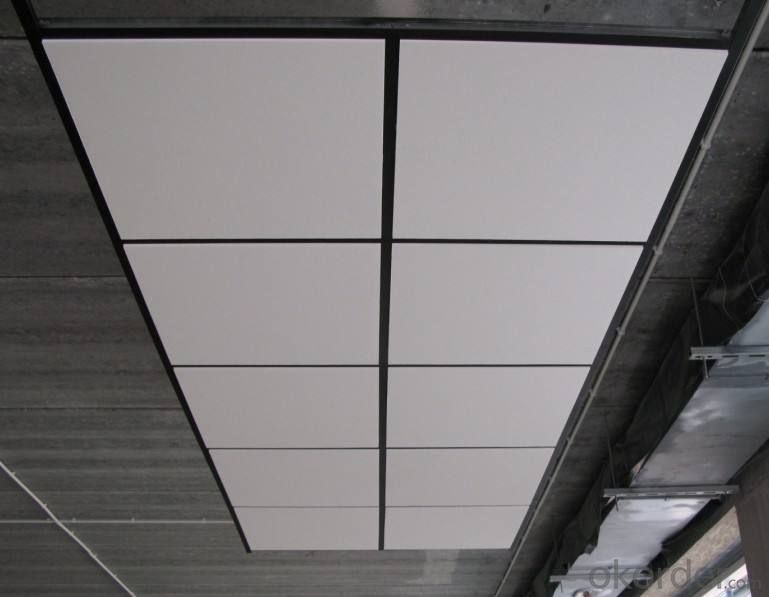
Competitive Advantages:
Fire-resistant;
Thermal-insulation;
Humidity-resistant;
Cleanability;
Environmental;
Elegant;
Safety and Convenience;
- Q: If you were a single woman with no man around, how would you fix a hole in the ceiling from water damage? And the roof? On a budget. Is this possible for a small woman to do this job by herself? Can someone give me step by step instructions? Photo of the damage attatched.
- I would repair it. It is not terribly difficult or costly - but your circumstance is complicated by the texture on the ceiling. You would need to purchase some lightweight joint compound, some fiberglass reinforcing mesh or tape, a couple of inexpensive plastic spackling knives (and you will need either a step-ladder or some other stable platform to work from. You will clean out the damaged area and remove all loose materials. Then use a knife to spread some joint compound in the hole, not too much but enough to cover everything with a thin coat. Spread the reinforcing material over this and add a small amount more compound. Smooth this as best you can with a knife. Allow to cure overnight. Repeat with thin coats of compound only until smooth. Sand lightly to remove tool marks. Now you have as smooth area in a textured area. There are texture-sprays-in-a-can that you can try, or you can just leave it smooth, Paint. Done. It takes some time, and you will learn as you go - so don't expect perfection right away. Good luck with it.
- Q: My house from 2009 to 2017, upstairs two households turn water seepage, resulting in my house has watermark, and moldy black phenomenon, and now need to refurbish the processing, because the region is easy to resurgence in the winter, so need Heroes who help out, talk about my house need to brush a few layers, respectively, need to brush what paint, the more specific the better
- The process of the wall renovation process is: 1, clean up the wall: With a knife to remove the wall has been loose putty layer. With the blade can not be cleared of the putty layer, you can use a small hammer gently tapping, if there is no hollowing out of the sound, and knock still not loose after the original base can be retained. 2, cleaning the wall: Clean the surface with clean water or scrub the surface of the dust, oil thoroughly cleaned, and then use a high pressure water gun to thoroughly rinse, remove the powder coating. 3, repair the wall: (1) grass-roots treatment of the skin: wire brush off the skin from the paint layer, brush interface agent, re-paint construction. (2) the treatment of cracks at the grassroots level: open V-groove, hanging alkali fiberglass mesh, cement mortar surface, approved scratch flexible putty, paint construction. (3) grass-roots hollowing of the treatment methods: marble machine cut out the hollow wall, thin and many times the cement mortar wipe, to the original wall height, brush interface agent, and then paint construction. 4, painted wall paint: After the base layer is completely dry, brush twice twice the wall paint. When the paint is applied, it is forbidden to avoid excessive watering, especially if the color of the paint is too high.
- Q: I have a large attic with sloped ceiling which are covered with rolls of fiberglass insulation. I use my attic for storage and am up there frequently, and for long periods of time. I would like ideas on what material could be used to cover the exposed insulation, so that I'm not breathing in the fiberglass.Cost and easy installation is a factor. I do not want to put up drywall or any type of regular ceiling, because if there's ever a leak, I want to be able to access it easily. Some sort of lightweight material that comes in a roll that I would be able to install with a staple gun would be great - but not plastic, because I don't want to worry about condensation and mold building up in the hot summertime. All ideas are welcome, and if you know the price of the material you're suggesting, please include it in your answer.Thanks everybody!
- Are there other terms for sound board I could not find a reference for it.
- Q: Bathroom waterproof well, why would water leakage?
- Toilet sewer mouth and floor drain around the water will be the corner, there may be infiltration along the water pipe. And then there is the possibility of tiling when the accidentally destroyed the waterproof layer. You paste the floor tiles in the brick after the tile on a layer of plugging the spirit can be
- Q: The newly bought rough roof is the roof but there is a section of the black bar on the ceiling that is not waterproof
- (SBS) modified asphalt waterproofing membrane impregnated and coated with styrene-butadiene-styrene (SBS) thermoplastic elastomer modified asphalt. Polyester felt, fiberglass felt and Glass fiber reinforced polyester felt for the fetal base, the upper surface covered with polyethylene film, fine sand or mineral sheet material made of isolation materials can be curled sheet waterproof material.
- Q: How to install an extruded board for heat insulation?
- Install the extruded board: first squeeze the extruded board on the wall, and then with 2 meters on the wall to the pressure, and at the same time leveling, the professional bonding gypsum mortar or polymer mortar from 10 mm to 3 mm, Construction process: from bottom to top sticky, wrong seam, bonding area shall not be less than 30 ~ 50%.
- Q: What is the solvent content of the insulation board?
- Insulation board of different materials, solvent content is also different. First, the external wall insulation materials: 1, silicate insulation material 2, ceramic insulation material 3, powder polystyrene particles 4, steel mesh mining cement foam board (Shu music board) 5, extruded plate XPS 6, hard foam polyurethane on-site spraying, foam polyurethane insulation Plate 7, foam cement board 8, A-class inorganic fire insulation mortar, 9 foam glass, 10 glass wool, 11 rock wool, 12 East far DY inorganic reactive insulation system Second, the roofing materials: 1, ceramic insulation board 2, xps extruded board 3, EPS foam board 4, perlite and perlite bricks 5, vermiculite and vermiculite brick 6, foam cement Third, the heat, air-conditioning materials: phenolic resin, polyurethane waterproof insulation integration, rubber sponge, polyethylene, polystyrene foam, glass wool, rock wool Fourth, steel materials: polystyrene, extruded board, polyurethane board, glass wool felt and so on. Five inorganic insulation materials: foam cement, YT inorganic reactive wall insulation materials, DY inorganic reactive insulation system, air gel felt.
- Q: wool /foil/fibtreglassim lost what would be the best as in cooler at summer and warmer in winter
- fiberglass for sure. Foil-faced batt insulation is often used in cathedral ceilings because it has a 0.5 perm rating, providing the permeability rating often required for use in ceilings without attic spaces. A vent baffle should be installed between the insulation and the roof decking to maintain the ventilation channel.
- Q: Renovation of living room wall with steel bricks
- Do not have trouble, with the United States painted paint art paint can make you want any style and effect, both environmentally friendly and labor
- Q: hey. i am moving my room into another room in my house. The only problem with this room is that the ceiling is quite old and one part of it fell off. I need to fix this part that fell off. I think the whole ceiling is plaster i guess but underneath the plaster are these really skinny wood boards with something that looks like cement between them. Can i just do the standard drywall fix with a new drywall piece and some mesh and can i nail the drywall into these boards? I also need to peel ugly wallpaper off too to paint it. If i could just fix this part of the ceiling, things would be great. Oh, the whole is like 3 feet by 2 ft so how much would the drywall be to fix it. i cant get it done by a proffessional because i have no money and my mom will by me the drywall. A lot of help appreciated. thanks.
- Your ceiling is called plaster and lathe. You can just purchase some plaster to fill in the hole. Build it back up in several layers.
Send your message to us
Fiberglass Bathroom Ceiling Panels - Soundproof Fiberglass Tiles & Panels
- Loading Port:
- Shanghai
- Payment Terms:
- TT or LC
- Min Order Qty:
- 4000 m²
- Supply Capability:
- 20000 m²/month
OKorder Service Pledge
OKorder Financial Service
Similar products
Hot products
Hot Searches
Related keywords
